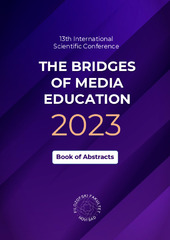The War in Ukraine: News Consumption Pattern of Serbian Citizens
Конференцијски прилог (Објављена верзија)
Метаподаци
Приказ свих података о документуАпстракт
News about the war in Ukraine is still present on the daily agenda in Serbia and the
world, more than a year after the Russian invasion commenced. In times of crisis, such
as this, citizens increasingly rely on the media for truthful and relevant information.
However, the media have experienced a decline in trust in the last decade, and the circulation of
disinformation and fake news has become part of everyday life. This is particularly the case in
Serbia, where the political polarization has spread to editorial policies, media reporting and the
selection of the news. This paper focuses on citizens’ media habits and perceptions of journalistic
reporting regarding the war in Ukraine. It is a part of a broader research, which aimed at
providing a comprehensive understanding of citizens' relationship with news, especially in the
digital environment. It was modeled according to the questionnaire for Digital News Report
developed by the Reuters Institute for the Study of Journali...sm. The basic questionnaire for 2022
was utilized, along with some questions from the previous years and a supplementary
questionnaire on the conflict in Ukraine. A quota sample was used, consisting of a total of 2,027
adult citizens of Serbia. The results show that people in Serbia rate the media's work much worse
than citizens of other countries when it comes to the war in Ukraine. However, respondents who
are closer to the Russian side in the conflict evaluate media reporting more positively. Unlike
other countries, where people turn to television as the main news source, the results indicate a
significant use of apps and websites of mainstream media in Serbia in this regard. The
importance of this research is that it provides insight into how citizens assess reporting on the
war, a perspective often missing when discussing the media and conflict.
Кључне речи:
media reporting / Ukraine / Russia / trust / polarizationИзвор:
The Bridges of Media Education, 2023Издавач:
- Novi Sad : Filozofski fakultet
Финансирање / пројекти:
- Министарство науке, технолошког развоја и иновација Републике Србије, институционално финансирање - 200025 (Универзитет у Београду, Институт за филозофију и друштвену теорију) (RS-MESTD-inst-2020-200025)
Колекције
Институција/група
IFDTTY - CONF AU - Išpanović, Igor AU - Ilić, Vujo AU - Ninković Slavnić, Danka PY - 2023 UR - http://rifdt.instifdt.bg.ac.rs/123456789/2945 AB - News about the war in Ukraine is still present on the daily agenda in Serbia and the world, more than a year after the Russian invasion commenced. In times of crisis, such as this, citizens increasingly rely on the media for truthful and relevant information. However, the media have experienced a decline in trust in the last decade, and the circulation of disinformation and fake news has become part of everyday life. This is particularly the case in Serbia, where the political polarization has spread to editorial policies, media reporting and the selection of the news. This paper focuses on citizens’ media habits and perceptions of journalistic reporting regarding the war in Ukraine. It is a part of a broader research, which aimed at providing a comprehensive understanding of citizens' relationship with news, especially in the digital environment. It was modeled according to the questionnaire for Digital News Report developed by the Reuters Institute for the Study of Journalism. The basic questionnaire for 2022 was utilized, along with some questions from the previous years and a supplementary questionnaire on the conflict in Ukraine. A quota sample was used, consisting of a total of 2,027 adult citizens of Serbia. The results show that people in Serbia rate the media's work much worse than citizens of other countries when it comes to the war in Ukraine. However, respondents who are closer to the Russian side in the conflict evaluate media reporting more positively. Unlike other countries, where people turn to television as the main news source, the results indicate a significant use of apps and websites of mainstream media in Serbia in this regard. The importance of this research is that it provides insight into how citizens assess reporting on the war, a perspective often missing when discussing the media and conflict. PB - Novi Sad : Filozofski fakultet C3 - The Bridges of Media Education T1 - The War in Ukraine: News Consumption Pattern of Serbian Citizens UR - https://hdl.handle.net/21.15107/rcub_rifdt_2945 ER -
@conference{
author = "Išpanović, Igor and Ilić, Vujo and Ninković Slavnić, Danka",
year = "2023",
abstract = "News about the war in Ukraine is still present on the daily agenda in Serbia and the
world, more than a year after the Russian invasion commenced. In times of crisis, such
as this, citizens increasingly rely on the media for truthful and relevant information.
However, the media have experienced a decline in trust in the last decade, and the circulation of
disinformation and fake news has become part of everyday life. This is particularly the case in
Serbia, where the political polarization has spread to editorial policies, media reporting and the
selection of the news. This paper focuses on citizens’ media habits and perceptions of journalistic
reporting regarding the war in Ukraine. It is a part of a broader research, which aimed at
providing a comprehensive understanding of citizens' relationship with news, especially in the
digital environment. It was modeled according to the questionnaire for Digital News Report
developed by the Reuters Institute for the Study of Journalism. The basic questionnaire for 2022
was utilized, along with some questions from the previous years and a supplementary
questionnaire on the conflict in Ukraine. A quota sample was used, consisting of a total of 2,027
adult citizens of Serbia. The results show that people in Serbia rate the media's work much worse
than citizens of other countries when it comes to the war in Ukraine. However, respondents who
are closer to the Russian side in the conflict evaluate media reporting more positively. Unlike
other countries, where people turn to television as the main news source, the results indicate a
significant use of apps and websites of mainstream media in Serbia in this regard. The
importance of this research is that it provides insight into how citizens assess reporting on the
war, a perspective often missing when discussing the media and conflict.",
publisher = "Novi Sad : Filozofski fakultet",
journal = "The Bridges of Media Education",
title = "The War in Ukraine: News Consumption Pattern of Serbian Citizens",
url = "https://hdl.handle.net/21.15107/rcub_rifdt_2945"
}
Išpanović, I., Ilić, V.,& Ninković Slavnić, D.. (2023). The War in Ukraine: News Consumption Pattern of Serbian Citizens. in The Bridges of Media Education Novi Sad : Filozofski fakultet.. https://hdl.handle.net/21.15107/rcub_rifdt_2945
Išpanović I, Ilić V, Ninković Slavnić D. The War in Ukraine: News Consumption Pattern of Serbian Citizens. in The Bridges of Media Education. 2023;. https://hdl.handle.net/21.15107/rcub_rifdt_2945 .
Išpanović, Igor, Ilić, Vujo, Ninković Slavnić, Danka, "The War in Ukraine: News Consumption Pattern of Serbian Citizens" in The Bridges of Media Education (2023), https://hdl.handle.net/21.15107/rcub_rifdt_2945 .



